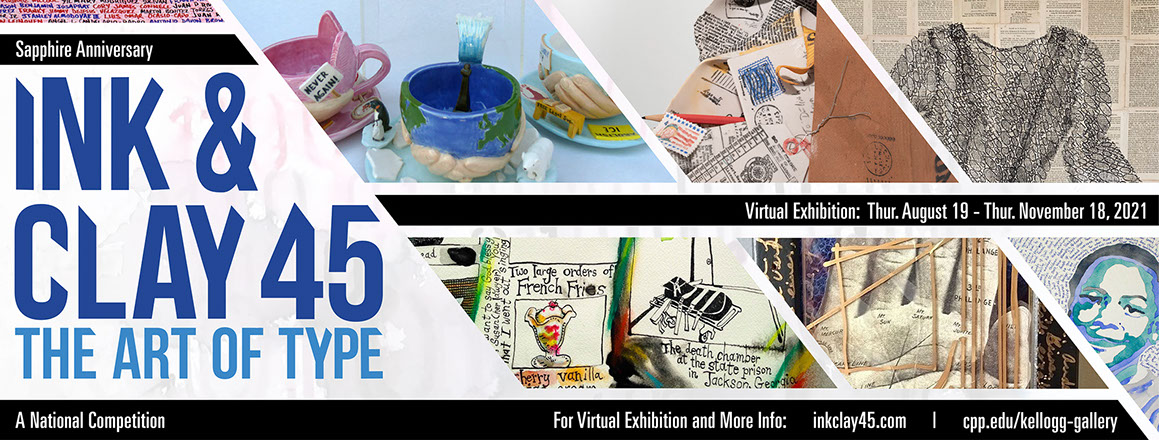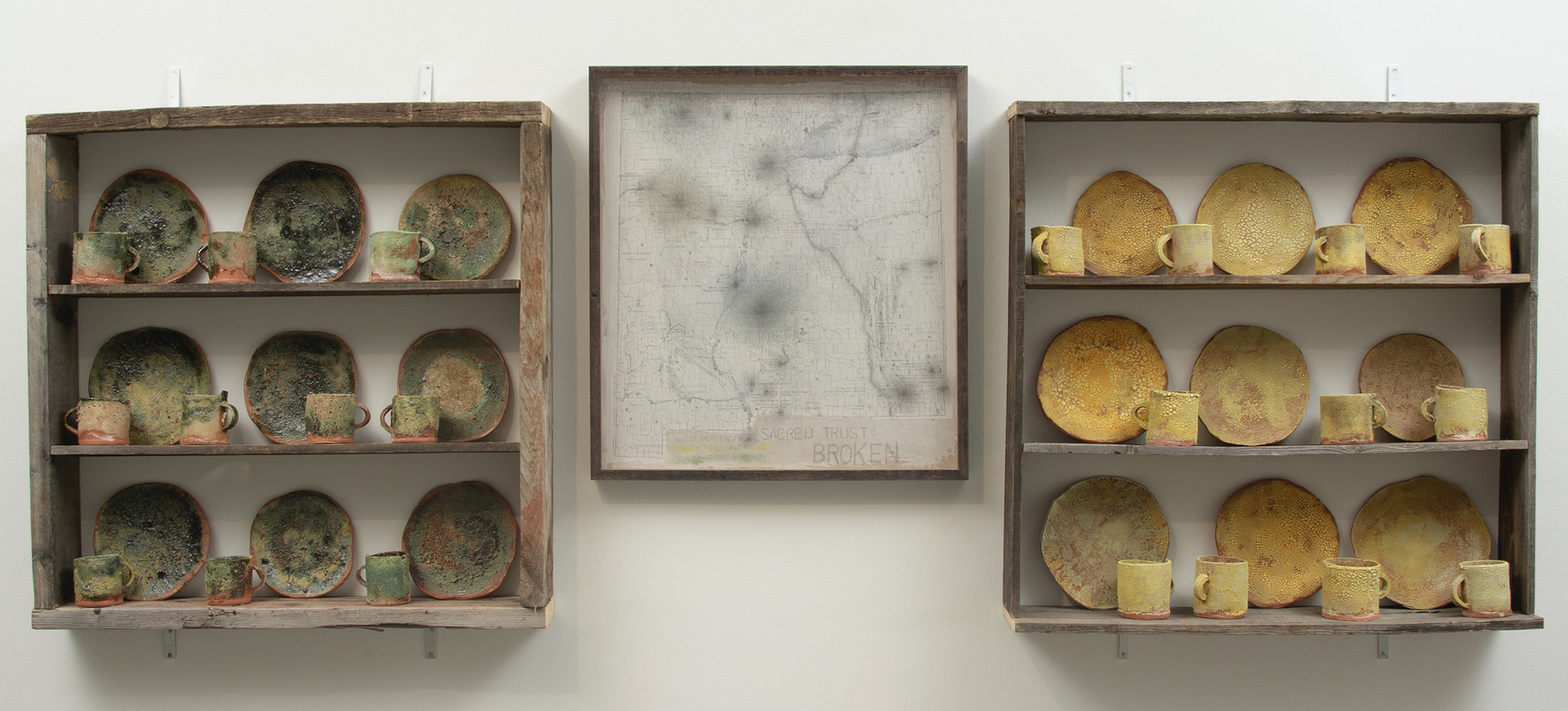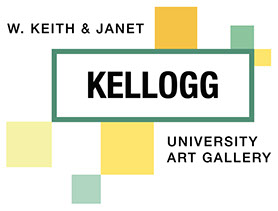


Sacred Trust: BROKEN, installation, 2019
three-part installation: ceramics, wood,
paper, ink, and clay
39 x 103.5 x 6”
Image use courtesy of the artist
Sacred Trust: BROKEN is an educational installation focusing on the extent of the nuclear weapons industry in New Mexico. This piece is part of an ongoing body of work that began in 2005 to bring awareness to the tragic environmental exploitation and degradation from this industry. Radioactivity is something that can't be identified through sight, smell, or taste, so in many instances, it is the silent enemy. Yes, there is naturally occurring radiation, but I am referring to the kind generated by the production of weapons of mass destruction. This educational body of work is a result of activism, organizing, and findings from collecting data (proof) from environmental studies of contamination in rural communities downwind and downstream from Los Alamos National Laboratory (LANL). LANL is the seat of the Manhattan Project and subsequently the blackest heart of weapons of mass destruction.
This installation demonstrates the pervasiveness of the nuclear weapons industry through mapping sites and produces a clear visual on one basic pathway of exposure to deadly toxins and radioactivity generated in the wake of this industry through simple daily household objects of plates and cups.
The map specifically identifies sites impacted by the nuclear weapons industry cradle to grave operations. The original printed map designed by Deborah Reade Designs and researched by a coalition of organizations acknowledged at the end of the statement highlights the extensive lands seized by the US Government and corrupted by private corporations for ill-gotten goods –cash, lots of it. New Mexico is the single state in the US to encompass the cradle-to-grave operations that have transformed it into a National Sacrifice Zone. From the cradle of mining and milling to research and development and transportation, then to the grave of radioactive waste disposal are identified. Depicted in the map, the dull grayish plutonium is indicated by radiating silverpoint drawings, a fine yellow mist clouds area of mining and milling, and a green ghost floats over the Trinity Test Site. The word "environmental" is etched into the plexiglass, shadowing the word "JUSTICE" that is printed across the entire map.
The two sets of ‘dinnerware’ fundamental to a traditional potter's repertoire convey the message "NOT FOOD SAFE," indicating that the ingestion of the deadly and destructive toxic and radioactive substances are present, and, if ingested, are harmful if not deadly. In the set to the left, Trinity Test Ware: NOT FOOD SAFE, the ‘dinnerware’ is glazed to represent what is referred to as ‘trinitite,’ not to be confused with tritium, which is a radioactive isotope of hydrogen that is an essential component of every weapon in the U.S. nuclear weapons stockpile. Trinitite was the result of a layer of sand and soil being melted by the intense heat of the Trinity Test. The green color was produced by the melted iron in much the same way as in early Chinese celadon glazes. The remarkable difference is that trinitite is radioactive.
Let Them Eat Yellowcake Ware: NOT FOOD SAFE, the yellow set to the right, is in reference to the mining and milling of uranium is extensive in northwestern New Mexico. This occurs for the most part on the indigenous lands of the Dine ́ and Pueblo Peoples. The people have been exploited by the mining industry and were exposed to the toxic and radioactive components in the uranium mines and mills. After milling the raw uranium, it was transformed into a fine bright yellow powder, thus the name yellow cake. “Let them eat yellowcake” refers to the quote by Marie Antoinette noting her indifference to the deathly suffering of “the common people.” In both sets of ‘dinnerware,’ the pathways to exposure are the same, through the most basic requirements for life: how darkly ironic. For the most part, people living self-sufficient/subsistence lifestyles of that time period were heavily reliant on the food they grew or gathered, the livestock being raised, and the animals hunted, for the water collected from rainfall and the water gathered from streams and rivers. All of these basics to life were and remain contaminated by the nuclear weapons industry and its lack of regard for the health and safety of the people and the land that supports life.
For information and how to become involved, please see the following websites: nucearactive.org earthspitituality.org
masecoalition.org tinitydownwinders.org
Credits for the map Water, Air, and Land: A SACRED TRUST, please see the Concerned Citizens for Nuclear Safety
website, nuclearactive.org

Ink & Clay 45
Kellogg University Art Gallery, Cal Poly Pomona
August 19 - November 18, 2021
© 2020-21 Kellogg University Art Gallery
Cal Poly Pomona
The artworks filmed, photographed and presented herein were used courtesy of each participating artist, with their individual permission.
Some images used in the logo design and graphics may be from a previous year's competition.
Copyright of all artwork used or reproduced is owned by each individual artist and cannot be copied or reproduced without each artist's individual permission.
